#Customize rigid-flex PCB
Explore tagged Tumblr posts
Text
The Salient Characteristics of a World-Class Chinese PCB Company
When you order Low-Cost PCB products online in bulk, you might worry about the timely delivery from Top Pcb Manufacturers. This is where a reliable Chinese PCB company works more efficiently than its competitors. With an advanced PMC management networking system, the company delivers orders faster than conventional delivery systems. You can receive faster delivery services in case of urgency.
0 notes
Text
Custom Rigid-Flex PCB
Discover the cutting-edge technology of custom rigid-flex PCBs at XPCB Limited, designed to meet the unique demands of your electronic projects. Our expertly crafted PCBs combine the durability of rigid boards with the flexibility of flexible circuits, allowing for innovative designs that save space and enhance performance. With precision engineering and high-quality materials, our custom solutions ensure reliability and efficiency in various applications. Contact us today at +86-136-3163-3671
0 notes
Text
LED PCB
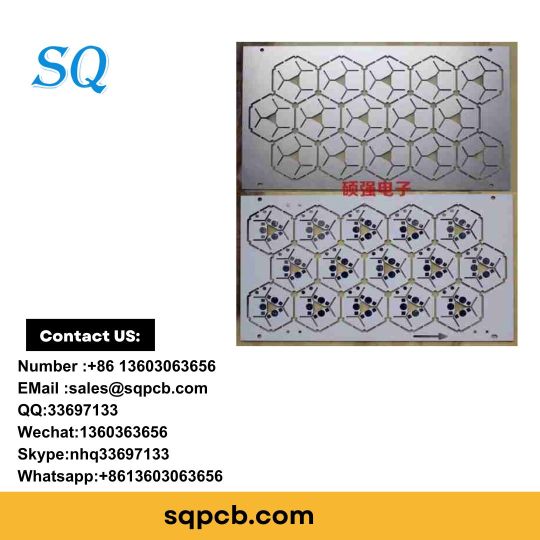
LED PCBs are engineered to power and control light-emitting diodes efficiently. Our LED PCBs feature thermally conductive materials for effective heat dissipation, ensuring optimal LED performance and longevity. Precision manufacturing and design expertise make our LED PCBs ideal for various lighting applications, from commercial displays to automotive lighting systems. Read More: https://sqpcb.com/products/led-pcb
#PCB Supplier#PCB Manufacturer#Custom Circuit Boards#Multi Circuit Boards#Aluminum base PCB#Multilayer PCB#aluminium pcb board#Customize Pcb#customized pcb boards#pcb board#printed circuit board#circuit board#Pcb manufacturing#Assembly pcb#pcb china#special pcb#LED PCB#rigid flex pcb
0 notes
Text
PCB Manufacturing-PCB Assembly-Hitech Circuits
Hitech Circuits is a lеаding PCB Manufacturing & PCB Assembly company with more than 20 years experience in the electronics manufacturing industry. We focus on PCB Design, PCB Layout, Circuit board fabrication, Turnkey PCB assembly, and electronic parts sourcing services.
With mature supply chain, talented design team, advanced manufacturing techniques and quality control systems, Hitech is able to provide one-stop electronics manufacturing services and solution for our customers to help them stand out in the marketplace.
We offer a full range of Electronic manufacturing services.
-LED PCB
-Heavy Copper PCB
-Multilayer PCB
-HDI PCB
-Flexible PCB
-Rigid-Flex PCB
-High Speed PCB
-High Frequency PCB
-PCB Reverse Engineering
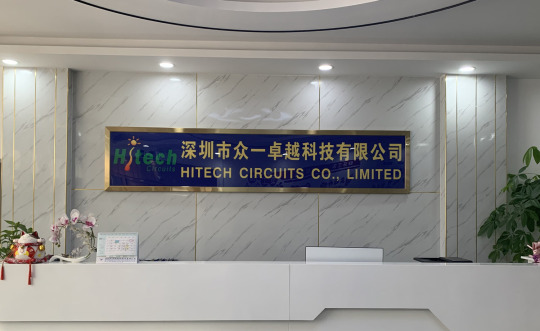
7 notes
·
View notes
Text


Printed circuit board manufacturing which is our major business, I think you already know, we are a PCB manufacturer. We have 3 branch factories dedicated to Quick Turn PCB Prototypes Manufacturing, Small and Medium-volume Printed Circuit Board, FPC Manufacturing services and PCB assembly services. Our market target is the High Multilayer PCB, High Density PCB, Flexible PCB, Rigid-flex PCB, Heavy copper PCB, Rogers PCB, Ceramic PCB and Special Materials Printed Circuit Boards.
Also, we can help customer sourcing components, wire PCB assembly and provide one-stop service.
Hitech Group is capable of providing full turn-key and partial turn-key PCB assembly services. For full turn-key, we take care of the entire process, including manufacture of Printed Circuit Boards, procurement of components, order tracking, continuous monitoring of quality and final board assembly. Whereas for partial turn-key, the customer can provide the PCBs and certain components, and the remaining parts will be handled by us.
4 notes
·
View notes
Photo
cute i like #beautiful colors
Quick FPC, Rigid-flex PCB prototype and PCB Assembly...





Art by Leah Gardner
74K notes
·
View notes
Text
Universal Structure Design for Multi-Specification Compatible Fuse Holders: Engineering Compatibility for 5×20mm & 6.3×32mm Fuses

Introduction
With the rapid development of diverse electronic and power distribution systems, customers now demand fuse holders that support modularity, cross-compatibility, and high adaptability. In OEM, aftermarket, and international markets, having separate fuse holders for each fuse size is costly and inefficient.
Multi-specification compatible fuse holders address this issue by allowing a single design to support both 5×20mm and 6.3×32mm fuses. These holders must maintain stable contact, mechanical retention, and standard dimensions. This article explores the core structural innovations: dual-compatible clip designs, automatic pressure-adjustable contacts, standardized housing for universal mounting, and anti-misplug limiters.
1. Dual-Size Compatible Clip Design for 5×20mm & 6.3×32mm Fuses
1.1 Compatibility Challenges
5×20mm fuses are common in small electronics, while 6.3×32mm fuses are used in high-power or industrial systems. The dimensional difference (length and diameter) means traditional fuse holders require separate part numbers.
1.2 Structural Design Principles
Modern fuse holders adopt multi-stage contact and retention structures or sliding internal slots that automatically adjust for fuse size.
Key Features:
Two-step limit structure: Lower step for 5×20mm, upper step for 6.3×32mm
Flexible contact clips that retract or expand as needed
Multi-point contact zones for stable current conduction
Case Study:
A power adapter manufacturer consolidated two SKUs into one universal holder, cutting BOM costs by 18% and improving assembly throughput by 32%.
2. Auto-Adjusting Contact Pressure Design
2.1 Insertion Force Imbalance Risks
Varying fuse diameters can lead to:
Low pressure → high contact resistance and heat
Excess pressure → glass tube damage, hard insertion
2.2 Automatic Spring-Based Adjustment
Advanced holders use flex-jointed or spring-assisted contacts:
Flexible hinge base absorbs dimensional variance
Tail-end springs maintain pressure across all sizes
Materials like heat-treated phosphor bronze for fatigue resistance
Performance Benefits:
Maintains <10 mΩ contact resistance
Survives 500+ insert/remove cycles
Reduces user error and assembly damage
Practical Testing:
This structure kept resistance variation under 10% between 40°C and 85°C for both fuse sizes — superior to rigid clip designs.
3. Standardized Housing Dimensions for Universal Mounting
3.1 Multi-Device Integration Needs
Devices use different mounting methods: panel-mount, PCB-soldered, DIN-rail, screw-fixed. To simplify manufacturing, one housing must fit many.
3.2 Modular Size Implementation
Designers apply:
Unified mounting holes (e.g., Φ10.3mm, 19×12mm)
Interchangeable mounting brackets
Sliding grooves for clip-in flexibility
Modular Example:
scss复制编辑[Module A: PCB Plug-in] ─┬─ Terminal block wiring
├─ Panel snap fit
└─ DIN rail clip mount
Customer ROI:
An industrial controls company standardized its PLC line with one universal fuse holder design, reducing part types by 50% and improving field repair efficiency.
4. Anti-Misplug Design: Fuse Length Limiting Structures
4.1 Insertion Errors in the Field
Common errors:
Short fuse in long-slot holder → loose contact
Oversized fuse → latch failure or contact arcing
Wrong fuse rating → safety risk
4.2 Built-In Length Limiters
Universal fuse holders include:
Dual-position stop grooves for exact length matching
Spring-tensioned limit walls that adapt to size
Optional colored guides to distinguish slot types
Engineering Result:
A medical device OEM reduced service errors by 60% using these limiters and color-coded guides, improving product safety and end-user confidence.
5. Engineering Recommendations and Future Trends
5.1 Intelligent Fuse Detection
Future models may embed micro-sensors (resistance-based or magnetic) to detect fuse size/type and communicate with the system MCU via I²C or CAN.
5.2 Platform-Based Modular Architecture
Develop a core-standardized fuse holder platform, with swappable:
Fuse blow indicators
Remote monitoring modules
EMI filters for sensitive circuits
5.3 Certification-Conscious Global Design
Ensure cross-certification readiness: UL, IEC, TUV. Structure should meet global electrical safety and mechanical compatibility norms.
Conclusion
Multi-specification compatible fuse holders represent the next evolution in electronic protection. By integrating dual-size retention, pressure-adjustable contacts, standardized mounting, and anti-misplug mechanics, manufacturers can streamline designs, reduce SKUs, and boost customer satisfaction.
Looking ahead, compatibility will extend beyond mechanical to intelligent systems — enabling fuse holders to integrate seamlessly into smarter, safer, and more modular electrical ecosystems.
en.dghongju.com
0 notes
Text
PCB Fabrication Company in India – Reliable Solutions for Your Manufacturing Needs
Printed Circuit Boards (PCBs) are the foundation of modern electronics. From mobile devices to industrial equipment, PCBs are essential in powering technology across industries. As demand for high-quality electronics continues to rise, India has become a global hub for PCB fabrication, offering reliable, affordable, and advanced manufacturing solutions.

If you are looking for trusted PCB fabrication company in India, FindingMFG connects you with verified manufacturers ready to deliver quality at every stage of production.
Why Work with a PCB Fabrication Company in India?
India has established itself as a leading destination for electronics manufacturing. Supported by skilled professionals, modern infrastructure, and global certifications, Indian PCB manufacturers deliver products that meet international standards. Here’s why businesses choose PCB fabrication companies in India:
Affordable and Efficient Production
PCB manufacturers in India provide cost-effective solutions, whether you require a prototype or a large-volume order. Competitive pricing combined with strict quality control ensures that you receive reliable products at the right cost.
Advanced Manufacturing Capabilities
With access to modern machinery and production techniques, Indian PCB companies can fabricate single-sided, double-sided, and multilayer boards. They can handle standard designs as well as complex, custom configurations.
Customized Services for Every Requirement
Indian manufacturers specialize in tailored PCB solutions to match your exact project needs. From design specifications to delivery timelines, they offer flexibility for both small and large production runs.
Commitment to Global Standards
Leading PCB fabrication companies in India hold international certifications such as ISO, IPC, UL, and RoHS. These certifications guarantee that every board produced meets high-quality benchmarks for global markets.
Comprehensive PCB Fabrication Services
At FindingMFG, you can easily connect with PCB manufacturers offering a wide range of services, including:
Single-Sided PCBs
Double-Sided PCBs
Multilayer PCBs
Flexible and Rigid-Flex PCBs
High-Density Interconnect (HDI) PCBs
Metal Core PCBs
High-Frequency PCBs
Whether your project is straightforward or highly complex, India’s PCB manufacturers have the capabilities to deliver.
Industries Served by PCB Fabrication Companies in India
Indian PCB manufacturers serve a broad range of industries, including:
Automotive
Aerospace and Defense
Consumer Electronics
Telecommunications
Medical Devices
Industrial Automation
IoT and Smart Technology
This industry expertise allows them to provide solutions that meet the specific needs of diverse applications.
FindingMFG – Connecting You with the Right PCB Fabrication Partner
FindingMFG is India’s trusted online platform for sourcing electronics manufacturing services. We help you discover reliable, verified PCB fabrication companies in India, simplifying the process of finding the right supplier for your project.
What FindingMFG Offers:
Verified suppliers across India
Easy-to-use search filters
Fast, direct quote requests
Transparent communication with manufacturers
Solutions for domestic and international buyers
Start Your PCB Manufacturing Project Today
Choosing the right PCB fabrication partner is a critical step toward building successful electronic products. With FindingMFG, you gain access to India’s best manufacturers who can deliver quality, precision, and value.
Post your requirement on FindingMFG and connect with trusted PCB fabrication companies in India.
Visit FindingMFG.com to get started
#pcb fabrication company#pcb fabrication companies in India#pcb design#pcb manufacturing#manufacturing directory
0 notes
Text
Comprehensive Guide to PCB Board Design & Printed Circuit Assembly for Optimal Electronic Performanc
Compre
Modern electronics rely heavily on printed circuit boards (PCBs). Without well-designed PCBs and quality assembly, devices can become unreliable or fail prematurely. Whether you’re a designer or manufacturer, understanding how to create and assemble high-quality PCBs is crucial. This guide covers essential design principles, manufacturing methods, testing, and tips for better PCB performance.
Understanding PCB Board Design Fundamentals
The Role of PCB Design in Electronics Functionality
PCB design is the blueprint that shapes how your device works. It directly influences electrical signals, heat management, and overall durability. Poor design can lead to issues like signal interference or overheating, hurting the product's performance. Good design results in a more reliable, longer-lasting device that customers can count on.
Essential Components of a PCB Design
A PCB isn’t just a green board with some wires. It includes multiple elements such as:
Layers: These are the different sheets of the PCB, repeating signals or power.
Traces: Thin lines of copper that connect components.
Pads: Contact points for mounting parts like chips or resistors.
Vias: Small holes that link traces on different layers.
Components: Resistors, capacitors, ICs, and other parts attached to the board.
Each piece affects how well the circuit functions. Proper layout and placement ensure electrical signals flow smoothly and the device functions as intended.
Designing for Manufacturing (DFM) Best Practices
Designing with manufacturing in mind helps lower costs and speeds up production. Here are key tips:
Use standard component sizes and footprints.
Keep traces wide enough to handle current.
Avoid tiny vias or complex shapes that are hard to manufacture.
Place components logically to reduce assembly time.
Minimize the number of layers if possible. Fewer layers often mean lower costs.
These practices make it easier for factories to produce your design without errors or delays.
Types of Printed Circuit Boards and Their Applications
Rigid PCBs
Rigid PCBs are the most common type. They’re made of solid material, like fiberglass, that keeps the board stiff. You’ll find these in everything from computers to appliances. They’re reliable, cost-effective, and easy to handle during assembly.
Flexible and Rigid-Flex PCBs
Flexible PCBs bend and fold, fitting into small spaces inside devices. Rigid-flex combines both types, offering stiffness where needed and flexibility elsewhere. These are popular in wearable tech and smartphones, where space is tight.
High-Frequency and HDI PCBs
Special boards designed for fast signals — known as high-frequency PCBs — are used in radio, radar, and satellite systems. HDI (High-Density Interconnect) PCBs pack more components into less space, ideal for miniaturized electronics like medical devices or smartphones.
The Printed Circuit Assembly (PCA) Process
From Design to Production: Step-by-Step Overview
A typical PCA process includes:
Designing the circuit using CAD tools.
Verifying the design for errors.
Creating prototypes for testing.
Moving into full-scale manufacturing.
Assembling components via soldering.
At every step, quality checks are essential to prevent costly mistakes later.
Key Manufacturing Techniques
Surface-Mount Technology (SMT): Attaching components on the surface. It’s fast and suitable for high-volume production.
Through-Hole Assembly: Inserting pins into drilled holes. Best for parts needing full mechanical strength.
Automated Assembly: Robots place components quickly with high precision.
Manual Assembly: Used for small runs or complex parts, but slower.
Choosing the right method impacts the speed and quality of your PCB production.
Quality Control and Inspection
Regular inspections catch problems early:
X-ray Inspection: Checks hidden solder joints.
Automated Optical Inspection (AOI): Finds defects on the surface.
SPI (Solder Paste Inspection): Ensures correct solder paste volume.
Complying with standards like IPC-610 and IPC-2221 helps keep quality high and consistent.
Critical Factors Influencing PCB and PCA Quality
Material Selection for Durability and Performance
Choosing the right materials makes a difference:
Substrates like FR-4 are common but vary in quality.
Copper thickness affects current capacity.
Solder masks prevent shorts and corrosion.
Durable materials stand up to temperature, vibration, and environmental stress.
Design for Reliability
To keep your device working long-term:
Minimize electrical interference by proper grounding.
Manage heat by placing heat-sensitive parts away from heat sources.
Use clear labels and ample space for easy assembly and maintenance.
Good practice prevents failure and reduces warranty repairs.
Environmental Considerations
PCBs face many conditions:
Use conformal coatings to protect from moisture.
Choose vibration-resistant designs for mobile devices.
Select temperature-tolerant materials for harsh environments.
Designing for these factors enhances lifespan and performance.
Cost Optimization
Balancing quality with budget is key:
Use standard components rather than custom parts.
Avoid overly complex designs.
Optimize layout for easy assembly.
Good planning reduces waste and keeps costs in check.
Best Practices for PCB Design and Assembly Optimization
Design Tips for Ease of Assembly
Properly space components for automatic placement.
Use clear silkscreen labels to identify parts.
Keep copper traces away from component pads for easier soldering.
Simplicity saves time during manufacturing and reduces errors.
Enhancing Manufacturing Efficiency
Stick to standard footprints.
Avoid intricate shapes on copper traces.
Use consistent pad sizes and pad-to-component spacing.
This approach speeds up production and keeps quality high.
Post-Assembly Testing and Validation
Once assembled, testing is crucial:
Conduct functional testing to verify operation.
Use burn-in tests to detect early failures.
Carry out long-term stress tests for durability.
Thorough testing ensures your product withstands real-world use.
Collaborating with Proven PCB Manufacturers
Choose manufacturers with:
Certifications like IPC-6012 or ISO 9001.
Experience in your specific PCB type.
Good communication and ability to meet deadlines.
Partnering with reliable suppliers reduces risks and improves final product quality.
Case Studies and Real-World Examples
Some companies have achieved great results by focusing on PCB design. For example, an electronics firm reduced their device failure rate by improving trace routing and component placement. Conversely, poor design choices, such as crowded traces, led to short circuits and costly recalls. Learning from these stories highlights the importance of meticulous planning and quality control.
Conclusion
Creating a high-performance PCB, from design to assembly, is essential for reliable electronics. Focus on good design practices, choose the right materials, and work with experienced manufacturers. Regular testing and inspection help catch issues before products hit the market. As technology advances, keep an eye on trends like miniaturization and high-frequency PCBs. Staying current ensures your designs remain competitive and durable. Quality now means better devices, happier users, and fewer headaches later.
0 notes
Text
Top 15 PCB Board Manufacturers in USA

When it comes to building reliable electronics, choosing the right PCB board manufacturer in USA is critical. Whether you’re a startup, engineer, OEM, or tech company, having a dependable partner for printed circuit board fabrication and assembly ensures faster production, fewer errors, and better results.
In this blog, we list the Top 15 PCB board manufacturers in the USA known for high-quality PCB fabrication, assembly, and fast delivery. These companies are widely searched and trusted across various industries — from medical to aerospace, IoT, automotive, and industrial applications.
1. PCB Power
PCB Power is one of the most trusted names among PCB board manufacturers USA. With over two decades of industry experience, PCB Power offers quick-turn PCB fabrication, full turnkey assembly, and components sourcing — all under one roof.
As a USA-based PCB company, they focus on delivering high-quality single, double, and multilayer PCBs with fast turnaround and competitive pricing. Whether you’re building prototypes or mass production, PCB Power’s online ordering system makes it easy to get instant quotes, track orders, and communicate with real engineers.
Key Features:
US-based production for fast and reliable delivery
ISO-certified processes for superior quality
Advanced manufacturing for high-density, multilayer PCBs
Turnkey assembly and BOM handling
Expert support for startups, engineers, and OEMs
If you’re looking for a complete PCB manufacturing solution in the USA, PCB Power should be your first stop.
2. Advanced Circuits
Advanced Circuits is one of the largest and oldest PCB manufacturers in the United States. Known for high-quality prototypes and low-to-medium volume production, they serve industries like aerospace, defense, and telecom.
They offer same-day and next-day shipping options and have their own in-house manufacturing for consistent quality.
3. Sierra Circuits
Sierra Circuits is a full-service PCB company specializing in quick-turn fabrication and assembly. They’re well-known for their high-performance HDI PCBs, rigid-flex boards, and support for complex designs. Sierra Circuits is ideal for companies looking for technical precision and tight tolerances.
4. Sunstone Circuits
Sunstone Circuits has built a reputation for delivering reliable prototype PCBs and small-batch orders. Their online design tools and instant quote system are ideal for hobbyists, startups, and small engineering teams. Their US-based manufacturing ensures high quality and fast shipping.
5. Bay Area Circuits
Located in California, Bay Area Circuits serves the Silicon Valley tech community with rapid prototyping, fabrication, and assembly services. They are experts in small-run production and serve various industries including medical, aerospace, and communications.
6. Rush PCB Inc.
Rush PCB Inc. offers full turnkey PCB services, including design, manufacturing, and assembly. They specialize in multilayer, flex, and rigid-flex PCBs with quick-turn options. Their experienced team supports everything from prototypes to volume production.
7. Custom Circuit Boards
Based in Arizona, Custom Circuit Boards provides high-quality PCBs for engineers and hardware startups. They focus on fast production and specialize in multilayer boards, thick copper PCBs, and RF designs.
8. Imagineering Inc.
Imagineering Inc. offers both PCB fabrication and assembly with ISO 9001 and AS9100 certifications. They serve demanding industries like medical and aerospace and are known for excellent quality and fast lead times.
9. Epec Engineered Technologies
Epec is a full-service provider offering custom PCB manufacturing, flexible circuits, and battery packs. With decades of experience, they provide engineered solutions for complex applications and tight deadlines.
10. APCT Inc.
APCT is known for high-speed, high-density interconnect PCBs. They support quick-turn and production-scale manufacturing. Their specialties include aerospace and defense-grade boards with rigorous quality requirements.
11. OnBoard Circuits
OnBoard Circuits offers affordable PCB prototyping, fabrication, and assembly with domestic and offshore capabilities. They are known for great customer support and fast delivery for small to medium volume orders.
12. Millennium Circuits Limited (MCL)
MCL provides reliable PCBs including rigid, flex, and rigid-flex boards. They serve industries like telecom, industrial, and medical, offering fast turnaround times and excellent pricing.
13. TechnoTronix
TechnoTronix offers advanced PCB manufacturing and assembly solutions with a strong focus on precision and fast lead times. They work with both small businesses and large enterprises, offering everything from basic to complex PCB designs.
14. RedBoard Circuits
RedBoard Circuits provides quality PCBs with a focus on customer service and quick delivery. They offer a wide range of PCB types including FR4, aluminum, and Rogers materials.
15. ALLPCB USA
ALLPCB USA offers cost-effective PCB solutions with a quick-turn focus. They provide both prototype and production runs and serve customers looking for affordable yet reliable circuit boards.
Choose the Best PCB Manufacturer for Your Needs
Selecting the right PCB board manufacturer in USA can be the difference between a successful project and costly delays. Whether you need fast prototyping, volume production, or full turnkey PCB assembly, each of these top 15 manufacturers brings something unique to the table.
However, if you’re looking for a complete solution with fast delivery, reliable quality, and competitive pricing — PCB Power is a clear leader. With US-based manufacturing, expert support, and a user-friendly online ordering platform, PCB Power makes your PCB journey seamless from design to delivery.
0 notes
Text
Navigating the Future of Electronics with Rigid-Flex and Taconic PCB Manufacturers
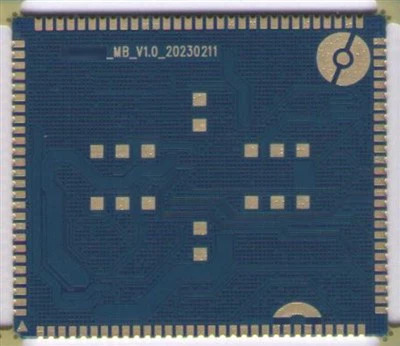
Today’s Printed Circuit Boards (PCBs) are much more flexible and advanced than the first rigid versions. Compact devices with great capabilities and multiple features have earned popularity in the electronics industry, leading to the rise of Rigid-Flex PCBs and Taconic PCBs. The use of these technologies enables unique designs, improves how long the device works, and maintains good electricity flow. Rigid-flex PCB Manufacturers can move and also keep their form, similar to how rigid boards function. They particularly shine in high-speed or RF and microwave applications. Dependable and effective products rely greatly on what electronics do.
Rigid-Flex PCBs: Hybrid Structure with High Functionality
Rigid-Flex PCBs take attributes from both stiff and flexible PCBs and merge them into one board. As a result, rigid and flexible boards no longer need connectors and cables, letting us make assemblies that are lighter and more space-saving. You can find these boards in smartphones, medical devices used on patients, military systems and aerospace devices. They are suited for use in places that require resistance to vibration and bending due to machines. In manufacturing, various layers are made and bonded together using very accurate methods. Therefore, it is only experienced manufacturing companies that can keep products of constant quality and performance.
Key Advantages of Rigid-Flex PCB Manufacturers
Important benefits of using well-known Rigid-flex PCB Manufacturers are their excellent design aid and advanced methodologies. They depend on laser direct imaging for precise work and optical inspection that finds problems in the early stage. Tests using temperature fluctuation and electrical overload guarantee that the product will function in any extreme condition. Manufacturers typically boost efficiency by assisting with design changes that lower the number of components and simplify assembly. In addition, they guarantee that flexible circuit boards meet all IPC standards for quality. Because they are involved in developing products and moving them into mass production, they help make the process more efficient.
Taconic PCBs: High-Frequency Performance Excellence
Taconic PCB Manufacturers are produced from proprietary PTFE-based laminates designed by Taconic with low dielectric loss and thermal stability. These boards are the preferred option for RF, microwave, and high-speed digital designs. They are most prevalent in satellite communications, radar systems, 5G base stations, and aerospace communication modules. Taconic laminates have low signal attenuation and superior dimensional stability. They exhibit moisture resistance as well as heat tolerance, which makes them dependable in extreme working environments. Production using these laminates demands proficiency in drilling, plating, and multilayer bonding because of their special properties.
What to Expect from a Taconic PCB Manufacturers
The best Taconic PCB Manufacturers must possess extensive experience in working with high-frequency laminate material. It involves strict impedance control, surface preparation, and low-loss transmission line engineering. Cleanroom facilities, specially designed PTFE-compatible equipment, and precise lamination procedures are necessary for high-quality output. The producers may perform RF testing and thermal profiling to ensure circuit integrity. They also guide customers on stack-up selection as well as PCB layout according to end-use frequency requirements. By maintaining compliance with IPC and MIL-spec specifications, these companies ensure the critical applications' performance and safety.
Comparing Rigid-Flex and Taconic PCBs
Although both are sophisticated PCBs, Rigid-Flex and Taconic PCBs are for different technical applications. Rigid-Flex is prized for mechanical flexibility, whereas Taconic leads for signal transmission at high speeds. Rigid-Flex boards simplify systems and minimize space utilization in cramped enclosures, while Taconic boards maintain signal purity in communication networks. The components and manufacturing methods are quite different, as are the final-use applications. The two are chosen based on physical space, frequency range, and exposure to the environment. Designers will often talk to both varieties of manufacturers to match their circuit requirements with the appropriate solution.
Conclusion
As innovation speeds up in electronics, the need for Rigid-flex PCB Manufacturers and Taconic PCBs keeps increasing. Such technologies facilitate the development of lighter, faster, and more efficient devices across industries. With increasingly sophisticated design challenges, collaborating with an experienced manufacturer is crucial. BS Interconn Hong Kong Co., LIMITED differentiates itself by providing quality-oriented, customer-centric PCB manufacturing services. Whether you're creating a next-generation medical wearable or a state-of-the-art RF device, selecting a reliable Rigid-Flex or Taconic PCB producer guarantees that your product will outperform and outlast the competition.
#Rigid-flex PCB Manufacturers#Taconic PCB Manufacturers#flexible circuit boards#high-frequency PCB#RF PCB solutions#microwave PCBs#PTFE laminates#hybrid PCB design#aerospace PCB#medical device PCBs#5G PCB manufacturer#signal integrity PCB#low dielectric PCB#high-speed PCB#multilayer PCB assembly#IPC compliant PCBs#MIL-spec PCBs#advanced PCB manufacturing#Taconic laminate PCB#Rigid-Flex technology
1 note
·
View note
Text
Assembly Compatibility of Rigid-Flex PCBs: Challenges and Best Practices
Rigid-Flex PCBs offer mechanical flexibility and space savings, but they also introduce unique challenges during PCB assembly. Unlike standard rigid boards, Rigid-Flex designs often require customized handling, modified assembly procedures, and special fixtures to ensure reliability and manufacturing yield.
This article highlights the key assembly compatibility factors to consider when working with Rigid-Flex PCBs.
1. Handling and Support During SMT
Rigid-Flex PCBs are not flat and rigid throughout. The flexible areas lack structural support, which can cause issues during pick-and-place and reflow processes.
Challenges:
Flex areas may droop or shift during placement
Uneven board thickness requires customized carrier trays
Vibration or vacuum pickup may damage unsupported zones
Best practices:
Use dedicated fixtures or pallets to stabilize the board during SMT
Keep flex zones outside the reflow region if not in use
Avoid placing components too close to flex/rigid transition zones
Use bottom-side supports during reflow to prevent sagging
2. Reflow Soldering Considerations
Rigid-Flex boards often contain materials with different thermal behaviors (e.g., FR-4 and polyimide). This affects reflow performance.
Recommendations:
Use gradual heating profiles to reduce thermal stress between layers
Pre-bake boards before assembly to remove moisture from polyimide (typically 110–125°C for 4–8 hours)
Avoid excessive reflow cycles — confirm your stack-up supports the required thermal budget
3. Component Placement Guidelines
Due to dynamic stress and bending zones, component placement on Rigid-Flex boards requires special attention.
Do not place components or vias in active flex areas
Maintain a clearance buffer zone between components and flex/rigid interfaces (typically 1–2 mm minimum)
Place heavy or high-pin-count components in rigid zones only
Use stiffeners under connector areas to enhance mechanical strength
4. Wave Soldering and Mixed Assembly
If your design involves through-hole components, wave soldering may be used — but only in rigid zones.
Key points:
Flex sections must be protected from heat and physical drag
Consider selective wave soldering or manual soldering for hybrid assemblies
Mask flex areas to prevent contamination or overheating
5. Depaneling and Final Assembly
Rigid-Flex boards often feature irregular outlines, cutouts, and multiple folding lines, which require precise handling.
Use laser cutting or CNC routing for clean edges on both rigid and flex parts
Avoid mechanical shearing that could damage internal layers
During final integration, use controlled folding fixtures to prevent over-bending
If the product requires folding before enclosure assembly, define the correct fold sequence and bend radius in the assembly instructions.
6. Packaging and Transport
Flex zones are mechanically fragile and sensitive to pressure, which makes packaging especially important.
Guidelines:
Avoid stacking boards directly on each other
Use custom foam inserts or anti-static trays with support under rigid areas
Ensure bend zones are kept flat and uncompressed during shipping
7. Documentation and Communication
To ensure smooth assembly, detailed documentation is essential:
Provide 3D drawings showing folding direction and radius
Define "no-go" areas for component placement and tooling holes
Share stack-up data and material specs with the assembler
Clearly label flex areas and handling restrictions on silkscreen or fab drawings
Final Thoughts
Rigid-Flex PCB assembly requires more than standard SMT techniques. From reflow and handling to packaging and integration, each step must accommodate the unique structure and material mix of the board.
By planning ahead, using proper fixtures, and coordinating closely with the assembly house, you can ensure smooth production and maximize the reliability of your Rigid-Flex products.
0 notes
Text
Precision PCBA Solutions by SFXPCB: Global Excellence in Electronics Manufacturing
In today’s fast-paced technological world, PCBA (Printed Circuit Board Assembly) is a fundamental process that powers every modern electronic device—from smartphones and medical instruments to aerospace equipment and industrial control systems. As electronic design becomes more complex, the need for a reliable and precise PCBA partner becomes even more crucial.
At the forefront of innovation and quality in PCBA manufacturing stands SFXPCB, a global provider trusted by industries in Germany, USA, UK, Austria, and Canada. SFXPCB delivers high-quality assembly, superior engineering support, and efficient global logistics—all while maintaining competitive pricing.
What is PCBA?
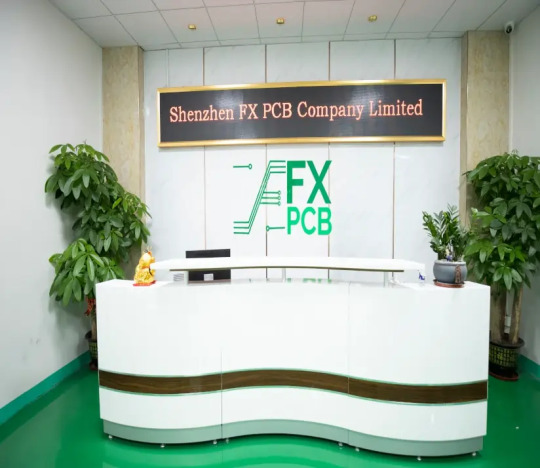
PCBA (Printed Circuit Board Assembly) refers to the process of assembling electronic components onto a bare PCB (Printed Circuit Board). This process involves:
Applying solder paste to board pads
Placing surface mount or through-hole components
Reflow or wave soldering
Inspection (AOI, X-ray, or visual)
Functional and quality testing
The final product is a fully functional electronic board, ready for integration into a finished device.
SFXPCB – Your Trusted PCBA Manufacturing Partner
With a strong manufacturing base in China and a broad international customer base, SFXPCB provides end-to-end PCBA services tailored to meet the highest industry standards. From prototype assembly to mass production, their process is defined by precision, consistency, and speed.
Why choose SFXPCB for your PCBA needs?
✅ 1. One-Stop PCBA Services
SFXPCB provides a complete PCBA solution, including:
PCB fabrication
Component sourcing (including hard-to-find parts)
SMT & THT assembly
Functional and in-circuit testing
Quality assurance and packaging
This streamlined approach minimizes delays and errors, ensuring your projects run smoothly from start to finish.
✅ 2. Advanced Technology & Capabilities
Equipped with state-of-the-art SMT lines, reflow ovens, AOI systems, and BGA placement equipment, SFXPCB can handle:
Fine-pitch ICs
BGA, QFN, CSP components
High-density interconnects (HDI)
Rigid, Flex, and Rigid-Flex PCBs
Their advanced capabilities make them a top choice for industries demanding high precision and miniaturization.
✅ 3. Unmatched Quality Control
SFXPCB strictly adheres to ISO9001, RoHS, and UL certifications. Each project undergoes:
Automated Optical Inspection (AOI)
X-ray inspection (for BGA and hidden joints)
Manual inspection by experienced technicians
Functionality testing based on customer requirements
You can trust that every assembly meets the highest standards.
Industries That Trust SFXPCB’s PCBA Services
SFXPCB’s ability to handle complex projects and deliver on time has made it the preferred PCBA manufacturer for companies in:
🚗 Automotive Electronics
Reliable and rugged PCBA for engine control units, infotainment, and safety systems.
🏥 Medical Devices
Precision PCBA used in imaging systems, diagnostics, monitoring devices, and wearables.
📡 Telecommunications
High-frequency, high-speed PCBs used in routers, base stations, and IoT gateways.
⚙️ Industrial Automation
Durable assemblies for sensors, controllers, and factory automation systems.
🛰 Aerospace & Defense
High-reliability PCBA for communication, navigation, and surveillance applications.
Global Reach, Local Focus
Though headquartered in China, SFXPCB is a global player, serving clients in:
Germany
United States
United Kingdom
Austria
Canada
Their responsive English-speaking support team and efficient international shipping make it easy to work with them, no matter where you're located.
Fast Turnaround and Competitive Pricing
SFXPCB understands that time-to-market is critical. That’s why they offer:
Rapid prototyping services
Flexible volume production (from 1 to 10,000+ units)
Competitive pricing without sacrificing quality
Through strong relationships with component suppliers and efficient manufacturing practices, SFXPCB delivers high-value PCBA services at a cost-effective rate.
How to Start Your PCBA Project with SFXPCB
Getting started with SFXPCB is simple and fast:
Visit the website: https://sfxpcb.com/
Upload your Gerber files and BOM
Get a fast and accurate quote
Review DFM suggestions from their engineers
Approve and track your order online
You’ll benefit from responsive communication, transparency, and a seamless production process from quote to delivery.
Customer Testimonials
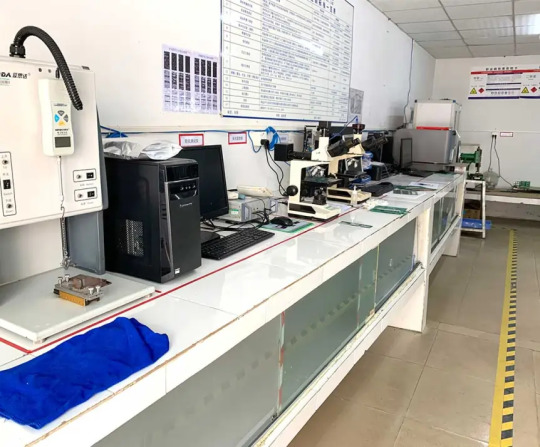
“SFXPCB is our go-to partner for PCBA. They consistently deliver high-quality boards and help us hit tight deadlines.” — CTO, IoT Startup (Germany)
“The team at SFXPCB is incredibly responsive and knowledgeable. We’ve trusted them with multiple projects and never been disappointed.” — Procurement Manager, Medical Device Company (USA)
Contact SFXPCB Today
Have a question or ready to place an order? Reach out directly:
📧 Email: [email protected] 📞 Phone: +86 0755 21012004
In the world of modern electronics, the importance of a reliable PCBA provider cannot be overstated. From prototyping to full-scale production, SFXPCB combines precision, speed, and service excellence to help businesses across the globe bring their products to life.
Whether you're an electronics startup or a global OEM, SFXPCB delivers quality you can trust—on time and on budget.
0 notes
Text
Rigid Flex PCB

Rigid-flex PCBs combine the flexibility of flex circuits with the structural stability of rigid boards. These versatile PCBs are designed to fit complex form factors, reduce assembly complexity, and enhance reliability. Our rigid-flex PCBs are expertly engineered and manufactured to meet demanding requirements in aerospace, medical, and other high-performance applications. Visit Our Site: https://sqpcb.com/products/rigid-flex-pcb
#PCB Supplier#PCB Manufacturer#Custom Circuit Boards#Multi Circuit Boards#Aluminum base PCB#Multilayer PCB#aluminium pcb board#Customize Pcb#customized pcb boards#pcb board#printed circuit board#circuit board#Pcb manufacturing#Assembly pcb#pcb china#special pcb#LED PCB#rigid flex pcb
0 notes
Text
Printed Circuit Board Market Future Trends: Emerging Technologies and Growth Opportunities Driving Innovation
The printed circuit board market is witnessing significant transformation as innovation and technological advancements propel its growth. PCBs, the backbone of modern electronic devices, continue to evolve in response to emerging industry needs, consumer demands, and new applications. Understanding the future trends shaping the PCB market is essential for manufacturers, investors, and technology enthusiasts seeking to capitalize on opportunities and anticipate challenges.

One of the foremost trends in the PCB market is the increasing demand for miniaturization. As electronic devices become more compact and multifunctional, the need for smaller, lighter, and more efficient PCBs has intensified. This trend is especially prominent in sectors like consumer electronics, healthcare, and automotive, where space constraints and performance requirements drive innovation. Flexible PCBs and rigid-flex boards are gaining popularity as they allow intricate designs that fit into compact devices without compromising functionality.
Advanced materials are another crucial factor shaping the PCB market’s future. The traditional use of fiberglass and epoxy resins is gradually being supplemented or replaced by high-performance substrates such as polyimide, ceramic, and Teflon. These materials offer superior thermal stability, electrical performance, and mechanical strength, which are critical for high-frequency and high-speed applications. This shift supports the growing demands of 5G technology, aerospace, and military electronics where reliability under extreme conditions is vital.
The rise of 5G technology is a major catalyst driving the evolution of PCBs. The implementation of 5G networks requires PCBs that can handle high-frequency signals with minimal interference and signal loss. This has led to innovations in high-density interconnect (HDI) PCBs, which allow more components to be packed into a smaller area with enhanced electrical performance. The demand for HDI PCBs is expected to surge as 5G infrastructure expands globally, impacting telecommunications, IoT devices, and smart cities.
Sustainability and environmental concerns are increasingly influencing the PCB market’s future. The electronics industry is under pressure to reduce its environmental footprint, leading to the development of eco-friendly PCB manufacturing processes and materials. Lead-free soldering, recyclable substrates, and reduced hazardous chemical use are becoming standard practices. Companies that embrace green manufacturing are likely to gain competitive advantages as consumers and regulators prioritize sustainability.
Automation and Industry 4.0 integration are revolutionizing PCB manufacturing. The adoption of artificial intelligence (AI), robotics, and machine learning in production lines improves precision, reduces defects, and accelerates manufacturing cycles. Automated optical inspection (AOI) systems and real-time monitoring help maintain high-quality standards while reducing costs. This trend not only boosts efficiency but also allows manufacturers to respond swiftly to customized and small-batch orders, which are increasingly common due to diversified product demands.
The automotive industry continues to be a major driver of PCB market growth, especially with the rise of electric vehicles (EVs) and autonomous driving technology. PCBs in EVs must withstand higher temperatures and voltages while maintaining safety and durability. Advanced PCBs facilitate battery management systems, power electronics, and sensor integration crucial for EV performance. Additionally, autonomous vehicles rely heavily on sophisticated sensor arrays and computing power, all of which depend on innovative PCB designs.
Healthcare technology is another promising sector influencing PCB trends. The surge in wearable medical devices, telehealth solutions, and diagnostic equipment requires PCBs that offer reliability, miniaturization, and biocompatibility. Flexible PCBs enable comfortable and accurate wearable sensors, while multilayer PCBs support complex diagnostic devices. The ongoing digitalization of healthcare creates a continuous demand for cutting-edge PCB solutions tailored to medical applications.
Global supply chain dynamics also impact the PCB market’s future. The COVID-19 pandemic exposed vulnerabilities in electronics supply chains, prompting companies to rethink sourcing and manufacturing strategies. There is a noticeable trend toward regionalization and diversification to minimize risks and reduce lead times. This shift may result in increased investments in local PCB manufacturing capabilities, encouraging innovation and customization closer to end markets.
Another important future trend is the increasing use of embedded components within PCBs. Embedding passive and active components directly into the PCB substrate reduces assembly time, improves reliability, and enables higher circuit density. This technology is particularly valuable in compact and high-performance devices such as smartphones, tablets, and aerospace electronics, where every millimeter of space counts.
Lastly, the integration of PCBs with emerging technologies such as augmented reality (AR), virtual reality (VR), and artificial intelligence (AI) will open new growth avenues. These technologies demand highly complex, lightweight, and reliable PCBs to support sensors, processors, and communication modules. As these applications gain traction across entertainment, education, and industrial sectors, PCB manufacturers will need to innovate to meet their unique requirements.
In conclusion, the printed circuit board market is poised for dynamic growth fueled by miniaturization, advanced materials, 5G adoption, sustainability initiatives, and Industry 4.0 automation. Key industries such as automotive, healthcare, and telecommunications will continue to drive demand for innovative PCB solutions. Manufacturers who embrace emerging technologies, invest in eco-friendly processes, and adapt to shifting supply chain models will be best positioned to thrive. As the market evolves, staying informed about these future trends will be essential for all stakeholders navigating the complex landscape of PCB technology.
0 notes
Text
What Makes Proto PCBs and Rigid Flex Circuit Boards Key to Efficient Electronics Manufacturing?
When an gadgets grows, the choice of printed circuit board (PCB) is critical for the usefulness, execution and lifetime of the last item. These components are instrumental in optimizing the generation prepare, empowering faster advancement cycles, and giving more strong, space-efficient plans. Understanding the parts of Proto PCBs and Rigid Flex Circuit Boards in cutting edge electronics can offer assistance manufacturers streamline their forms and progress item quality.
Proto PCBs: The Establishment of Prototyping and Innovation
Proto PCB, too known as prototype PCBs, serve as the to begin with cycle in the PCB improvement cycle. They are basic in the plan and testing stages of item improvement, advertising manufacturers a way to test circuits and components some time recently full-scale generation. Proto PCBs are regularly created in little amounts, permitting engineers to rapidly distinguish plan imperfections, troubleshoot issues, and refine the circuit layout.
One of the fundamental points of interest of Proto PCBs is the speed at which they can be fabricated and tried. Since they are utilized for prototyping, manufacturers can make fast cycles, guaranteeing that the last item is as optimized as conceivable. This flexibility permits companies to decrease advancement time, cut costs, and eventually bring items to showcase faster.
Additionally, Proto PCBs offer the advantage of flexibility in plan. They can be customized to meet the particular needs of a extend, whether that’s for a straightforward buyer gadget or a complex mechanical framework. With progressed manufacturing strategies, Proto PCBs can join high-density interconnects (HDI), fine-pitch components, and multi-layer plans, making them perfect for cutting-edge electronic products.
Rigid Flex Circuit Boards: A Idealize Mix of Rigid and Flexible Technologies
Rigid Flex Circuit Boards speak to a noteworthy progression in PCB design. As the title proposes, they combine the properties of both Rigid PCBs and Flexible circuits, making them profoundly flexible and space-efficient. These Boards are essentially utilized in applications where space is restricted, or the item requires a combination of both Rigid and Flexible connections.
One of the essential benefits of Rigid Flex Circuit Boards is their capacity to give high-density interconnection in compact spaces. These Boards can diminish the number of connectors and cables required in a framework, rearranging the by and large plan. This is especially valuable in businesses such as aviation, car, and restorative gadgets, where estimate, weight, and unwavering quality are vital factors.
Rigid Flex Circuit Boards coordinated Rigid PCB areas with Flexible segments, permitting for both inflexibility in particular regions and adaptability where essential. This crossover plan is perfect for applications that require both steadiness and the capacity to twist or crease in a few parts of the product.

Moreover, these circuit Boards are cost-effective in the long run. Whereas the beginning setup costs might be higher than standard PCBs, Rigid Flex Circuit Boards diminish the require for extra connectors, cables, and other components, driving to investment funds in both get together and upkeep. Their capacity to coordinated numerous capacities into a single board encourage decreases the complexity of the last design.
Enhancing Manufacturing Efficiency
Both Proto PCBs and Rigid Flex Circuit Boards contribute to the by and large proficiency of the gadgets manufacturing prepare. Proto PCBs speed up the prototyping stage, permitting companies to rapidly test and repeat on their plans. This diminishes the hazard of expensive blunders amid the mass generation stage and empowers manufacturers to meet tight deadlines.
On the other hand, Rigid Flex Circuit Boards streamline the last item plan, making a difference manufacturers decrease the number of components, streamline gathering, and upgrade item strength. By coordination both Rigid and Flexible components into a single board, Rigid Flex Circuit Boards make more compact and effective plans, which is a key advantage in today’s gadgets market.
In conclusion, Proto PCBs and Rigid Flex Circuit Boards play a significant part in making strides the effectiveness of gadgets manufacturing. They empower quicker prototyping, more dependable plans, and space-efficient arrangements, all whereas diminishing generation costs. As the request for more modern and compact electronic gadgets develops, these innovations will proceed to be at the cutting edge of development, guaranteeing that manufacturers can meet the challenges of present day gadgets generation.
0 notes